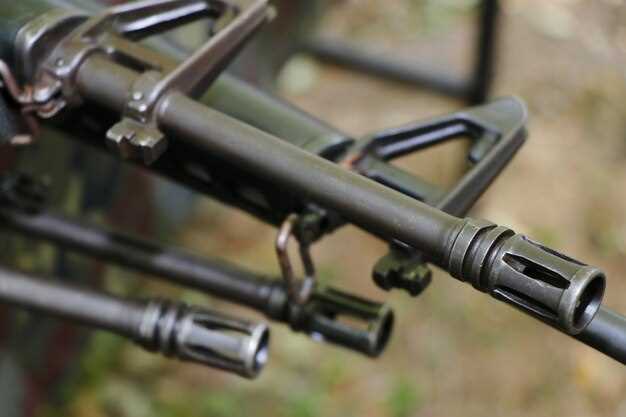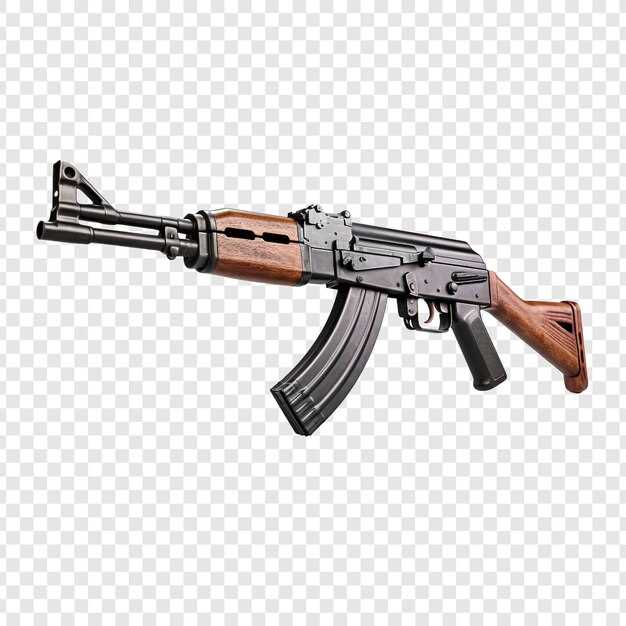
Bolt-action vs semi-auto rifles for hunting

When it comes to selecting the ideal rifle for hunting, two predominant types come to the forefront: bolt-action and semi-auto rifles. Each design boasts unique advantages and potential drawbacks, making the choice a matter of personal preference, hunting style, and specific game requirements. Understanding these differences is essential for any hunter looking to optimize their performance in the field.
Bolt-action rifles are renowned for their reliability and accuracy. The manual operation of the bolt allows for precise control over each shot, and the design often supports high-caliber cartridges that enhance stopping power. For long-range hunting and situations where precision is critical, the bolt-action rifle stands out as an exceptional choice. However, hunters must consider the need for quicker follow-up shots and the impacts this may have in fast-paced hunting scenarios.
On the other hand, semi-auto rifles offer a distinct advantage in terms of rapid firing capabilities. The semi-auto design allows the shooter to fire a round with each pull of the trigger, significantly increasing the rate of fire. This can be particularly beneficial in environments where multiple shots may be necessary, such as in hunting fast-moving game. However, the complexity of semi-auto mechanisms may raise concerns regarding reliability in harsh conditions compared to their bolt-action counterparts.
The decision between bolt-action and semi-auto rifles ultimately hinges on the hunter’s specific needs, preferences, and the hunting environment. In the following sections, we will delve deeper into the features, advantages, and suitable applications of each rifle type, providing a comprehensive comparison for avid hunters seeking the right firearm for their next adventure.
Advantages of Bolt-Action Rifles for Target Precision
Bolt-action rifles offer several advantages when it comes to target precision, making them a favored choice among many hunters and sharpshooters. Unlike semi-auto rifles, which can sometimes compromise accuracy due to their rapid cycle of operation, bolt-action rifles are designed for meticulous handling and exceptional stability.
One significant advantage is the inherent design of bolt-action mechanisms. Each round is loaded individually, allowing the shooter to focus on proper alignment and trigger control without the distraction of continuous firing. This deliberate process encourages a more thoughtful shooting technique, leading to improved accuracy.
Additionally, bolt-action rifles typically feature a more robust construction, often utilizing heavier barrels that help dampen vibration during firing. This results in less recoil movement, allowing the shooter to maintain a steady sight picture between shots. Such stability is vital for precision shooting, particularly at long distances.
Moreover, bolt-action rifles often have finer trigger systems compared to their semi-auto counterparts. A crisp, light trigger pull enhances the shooter’s control and minimizes the risk of pulling off-target. This precise trigger mechanism contributes significantly to target accuracy, allowing for small adjustments and greater confidence in each shot.
The single-shot nature of bolt-action rifles also encourages careful ammunition selection and load development. Shooters can take the time to test various cartridges, optimizing their rifle’s setup for specific conditions and target requirements. This level of customization is less accessible with semi-auto rifles, where cycling speed might overshadow the importance of achieving the perfect load.
In summary, the bolt-action rifle’s design promotes superior target precision through individual round management, stable construction, refined trigger systems, and tailored ammunition. These attributes make it a powerful tool for any serious marksman seeking accuracy in the field.
Speed and Recoil Management in Semi-Auto Hunting Firearms
Semi-automatic rifles offer a significant advantage in speed compared to bolt-action firearms. The ability to fire multiple rounds in quick succession allows hunters to take follow-up shots without the need to manually cycle the action. This feature is particularly beneficial in situations where quick target reacquisition is crucial, such as in dense cover or when dealing with fast-moving game. Adequate speed can enhance a hunter’s effectiveness and increase the likelihood of a successful harvest.
However, the increased rate of fire in semi-automatic rifles can also lead to challenges in recoil management. Unlike bolt-action rifles, which often have heavier frames conducive to absorbing recoil, semi-autos can deliver a sharper kick due to their lighter construction and gas operation. This can affect the shooter’s accuracy, particularly during rapid firing sequences. Effective recoil management becomes essential for maintaining control and precision on follow-up shots.
Many semi-auto rifles employ various features to mitigate recoil. Adjustable gas systems can regulate the amount of gas that cycles the action, helping to reduce felt recoil. Additionally, muzzle devices such as compensators or brakes can redirect gas and reduce upward movement, allowing for quicker target reacquisition. Selecting the right ammunition also plays a vital role; lighter loads can decrease recoil while still providing sufficient power for hunting.
In comparison to bolt-action rifles, which typically feature a slower rate of fire but often excel in accuracy due to their more stable shooting platform, semi-auto rifles demand a balance between speed and control. Hunters must practice regularly to adapt to the specific recoil characteristics of their chosen semi-automatic firearm, ensuring they can capitalize on its speed without sacrificing accuracy.
Cost Considerations and Maintenance for Each Rifle Type

When selecting between bolt-action and semi-auto rifles for hunting, cost and maintenance are critical factors that can influence a hunter’s decision. Understanding the financial implications and upkeep requirements of each type is essential for making an informed choice.
Bolt-Action Rifles: Typically, bolt-action rifles are more affordable than their semi-auto counterparts. This price difference can often be attributed to their simpler mechanism and fewer moving parts. A quality bolt-action rifle can be purchased without breaking the bank, making it an attractive option for budget-conscious hunters. Additionally, the durability of bolt-action rifles often leads to lower long-term costs, as they generally require less frequent repairs and maintenance over time.
In terms of maintenance, bolt-action rifles are relatively easy to care for. Routine cleaning involves the regular application of gun oil, inspection of the barrel for fouling, and ensuring all moving parts are functioning smoothly. This straightforward maintenance routine allows hunters to spend more time in the field and less time worrying about the upkeep of their firearms.
Semi-Auto Rifles: On the other hand, semi-auto rifles tend to be more expensive initially due to their complex mechanisms and higher manufacturing costs. The advanced technology involved in semi-auto design can lead to a higher price point, which may deter some hunters who are watching their budgets. However, it is important to note that semi-auto rifles often offer features such as reduced recoil and faster follow-up shots, which can enhance hunting performance.
Maintenance for semi-auto rifles can be more involved than for bolt-action models. The increased number of moving parts requires regular cleaning and lubrication to ensure smooth operation. Hunters must pay special attention to the gas system and magazine components, as these areas are crucial for the rifle’s performance. This additional care may lead to higher maintenance costs over the lifetime of the firearm.
In summary, while bolt-action rifles offer a cost-effective choice with straightforward maintenance, semi-auto rifles provide advanced features and performance at a higher price point and maintenance requirement. Ultimately, hunters should weigh these factors based on their budget and preferences to determine which rifle type best suits their needs.




